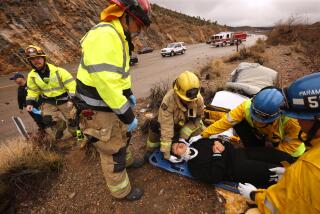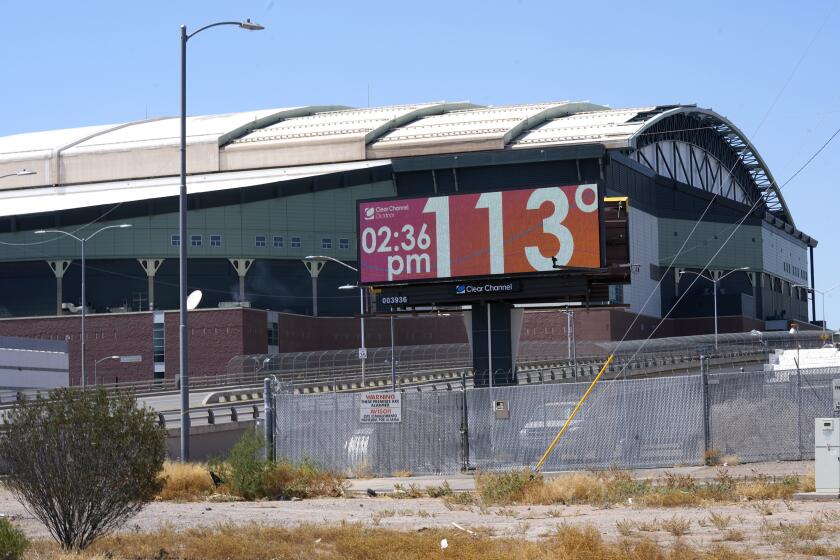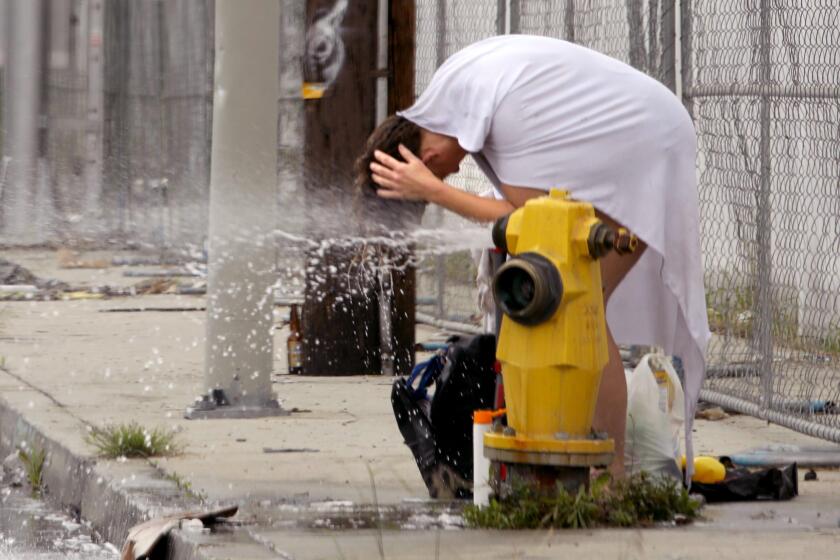Arkansas Will Tell the Stories of Overlooked Japanese Detainees
From paintings of kimono-clad women to a caricature of Hitler and a sketch of an American soldier, shield in hand, marching across the globe -- the artworks offer a vivid portrayal of history and culture.
Crafted by Japanese American children in internment camps in Arkansas during World War II, they were willed to former McGehee Mayor Rosalie Santine Gould by a camp art teacher.
And they are the heart of a major preservation effort.
Once bustling with 16,000 detainees, the camps have been reclaimed as farmland -- except for isolated historical markers and a small cemetery.
“May the people of Arkansas keep in beauty and reverence forever this ground where our bodies sleep. Erected by the inhabitants of Rohwer Relocation Center -- October 1944,” reads an inscription on an obelisk topped with a globe and an eagle.
In Gould’s home, autobiographies written by the children as part of the camp schoolwork fill Manila folders tucked neatly into cardboard boxes.
“Since Dec. 7, 1941, War has darkened our horizons. On April 13, 1942, we were evacuated to the Santa Anita Assembly Center. Never had we been in a place so devoid of luxuries,” 15-year-old Midori Oura wrote in 1942.
After five months, the family was sent by train from Santa Anita to Arkansas. The window shades on the train cars were pulled shut and passengers were allowed exercise stops only in remote areas so as not to pique anti-Japanese furor in towns along the route.
“However far Arkansas may have seemed to us, in our hearts we were glad that we were going to a permanent relocation center [for the duration of the war],” Midori wrote.
Sixteen assembly centers were made available on the West Coast. More than 120,000 Japanese Americans from the West Coast and Hawaii were temporarily assigned there, taken from their homes and land out of fear of domestic terrorism and racism after the attack on Pearl Harbor.
They were told that they were being relocated for their own protection because of public hostility.
At the onset of World War II, they were moved to 10 more “permanent” camps -- two of them in southeast Arkansas. Those two were the only ones in the segregated South, selected because the federal government owned a wide expanse of land here.
Midori and her family were among the 16,000 interned in Arkansas.
A series of exhibitions, a symposium and a documentary compiled by the Los Angeles-based Japanese American National Museum and the University of Arkansas at Little Rock tell the overlooked story of the Arkansas camps and their detainees.
In flowing prose, Midori described her life from birth to captivity:
“Early on the morning of Nov. 20, 1926, Mr. and Mrs. Stork were racing through the Southern California skies, bearing their precious burdens. Said Father Stork, ‘You’ve beaten me twice to this Inglewood home, but this time, I’ll be first.’ ‘Oh no you won’t,’ cried Mother Stork. ‘This world needs more women.’ With an extra flap of her wings, she reached the house on the stroke of one by the clock. Thus I came into the world. My parents were both delighted even though I was their third girl.”
Johanna Miller Lewis, chairwoman of the university’s history department, said historians have long neglected the Arkansas camps.
“In all of the stuff written on the camps, there is usually only one or two pages about Arkansas. Arkansas got the short end of the stick and we are trying to fix that,” she said.
Lt. Gov. Winthrop Paul Rockefeller said he hopes that the project, funded through a $3-million grant from his family’s Winthrop Rockefeller Foundation, will help Americans learn from history.
Rockefeller became interested in the camps 15 years ago when he met a Silver Spring, Md., restaurant owner who spoke about being relocated to Arkansas during the war.
“I think it’s important particularly in these times that we do use it as a learning experience for the people of Arkansas. These are parts of history that we need to objectively look at and make sure that they are not forgotten,” he said.
The Rohwer camp opened in September 1942 in Desha County, the Jerome Center the same year in Drew and Chicot counties. Only one Japanese American family descended from the camps’ residents remains in the state today.
In the nearly six decades since the camps closed, there has been little enthusiasm for documenting their history, said Gould, who became interested in Rohwer and Jerome in the early 1980s while serving as mayor of McGehee 12 miles away.
“When I started all this 20 years ago, there was no interest at all [in preservation]; everyone turned their backs. There were World War II veterans who did not want anything to do with the Japanese here. I didn’t agree with them, but I didn’t want to tear the town up,” she said.
Although she is a lifelong resident of the area, Gould knew little of the camps before becoming mayor. When the camps opened, she was in Fayetteville attending college.
Later, she returned and married into the family that owned the land where the Rohwer camp was located. She recalled taking her children to play in the area that was the camp cemetery.
“It was part of Arkansas and part of American history, but we knew very little about it. It was an entirely different America, an entirely different set of rules then,” she said.
The cemetery sits at the end of a gravel path that winds between planted fields. Its 29 grave markers include the names Kowata Takeshi, 1890-1943; Matsuda Matagoro, 1872-1942, and Kunishi Saijiro, 1867-1943.
Smaller markers indicate the graves of infants with names including Masaki, Tasugi and Sano. All were born in 1942 and 1943.
During their internment, the Japanese Americans erected a towering tank-shaped monument on the cemetery grounds in tribute to former detainees who served and died during World War II in the 100th Infantry Battalion and 442nd Regimental Combat Team, made up mostly of Japanese Americans.
Both units saw fierce fighting in Europe and were among the bravest in U.S. military history, receiving more than 18,000 honors.
Along with the names of the soldiers beneath the drawing of an American eagle is the inscription: “Dedicated to the men from Rohwer Center who gave their lives to America on foreign soil.”
The only marker at the Jerome camp was constructed in the early 1990s. A brick tower, part of the camp’s physical plant, is all that remains. The crumbling 80-foot tower sits in the middle of farmer Kim Ellington’s milo field.
Ellington, who grew up on the property, said former detainees often visit the site.
“We have eight or nine groups out here a year. They just want to see and remember it. Every now and then, there would be someone who had hard feelings, but not often,” he said.
Ellington has unearthed spoons, pieces of dishes and other remnants of the camp while tilling his field. “And more bricks than you can shake a stick at,” he said.
Irene Hirano, the museum’s executive director, has close ties to the Rohwer camp. Her grandfather and seven of her aunts and uncles were relocated from Gardena to Rohwer during the war.
“When I was growing up, our families didn’t talk about the war years. I knew my father was in the military, and occasionally my relatives would talk about the camp, but I had no idea of what that whole experience was about,” she said. “It wasn’t until I went to college and began to learn about what happened during World War II
She visited the Rohwer cemetery for the first time this year.
“It underscored the importance of why we need to preserve the story of the people that are still living and share it with a larger American public.”
More to Read
Start your day right
Sign up for Essential California for news, features and recommendations from the L.A. Times and beyond in your inbox six days a week.
You may occasionally receive promotional content from the Los Angeles Times.





